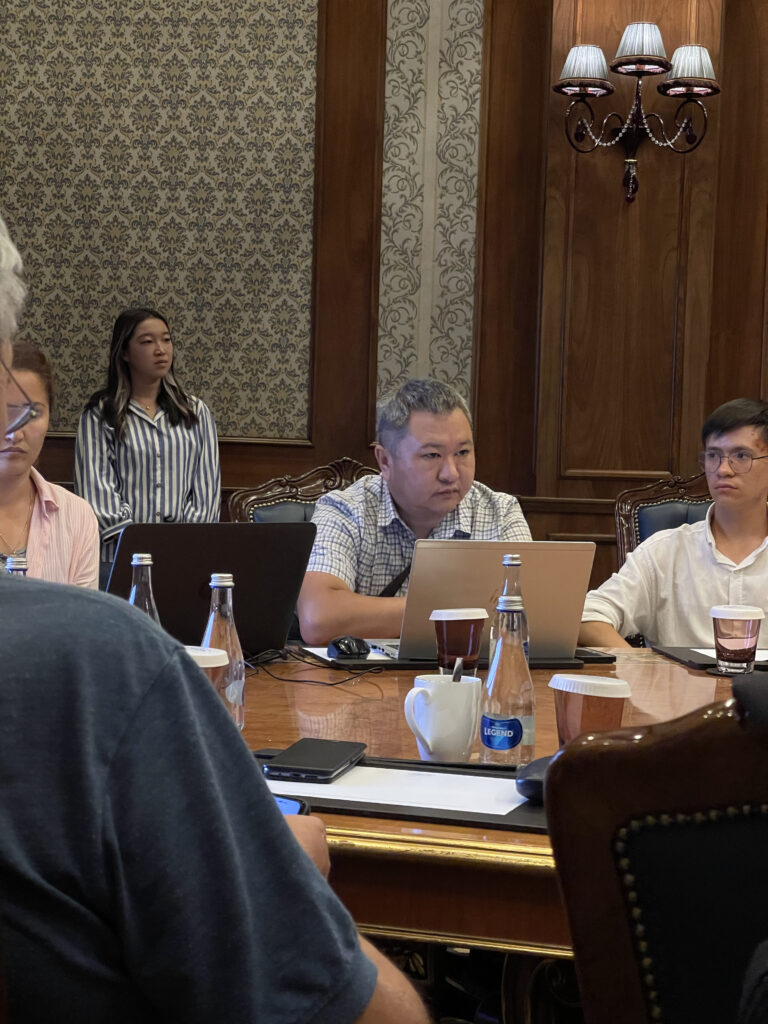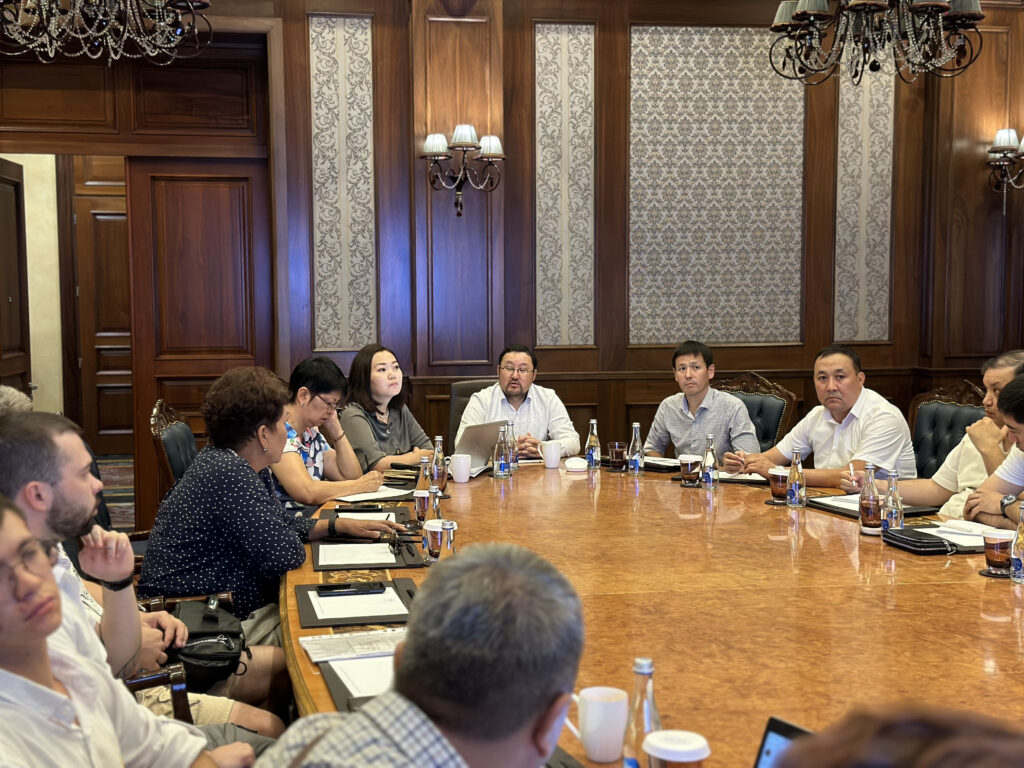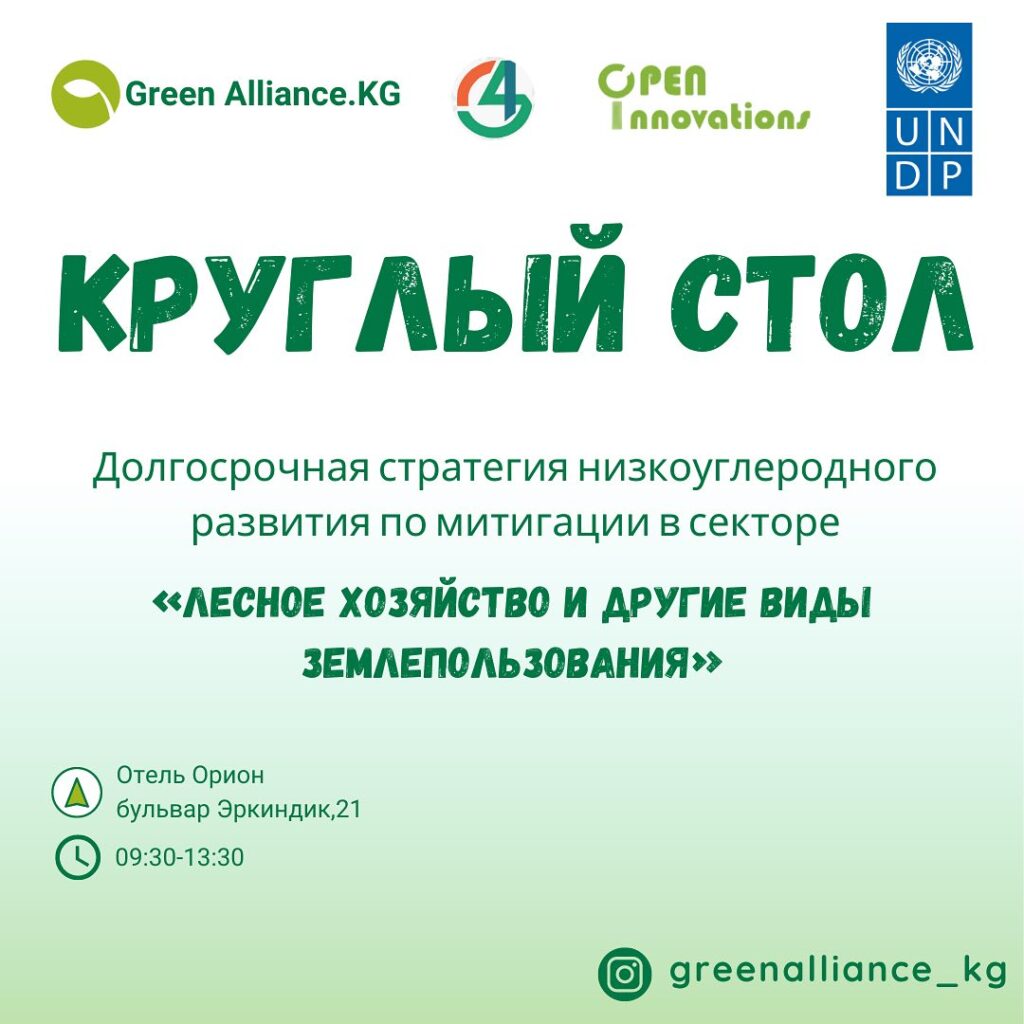
25.07.2023
Experts discussed a long-term low-carbon development strategy for adaptation and mitigation in the sector “Agriculture, forestry and other land use”
Since agriculture is one of the main sources of greenhouse gas emissions in the country, on July 25, within the framework of the UNDP project “Providing advisory support in the development of the “Expanded Plan for the Implementation of NDCs and the Long-term Low-Carbon Development Strategy until 2050”, a round table was held on the topic of the long-term low-carbon development strategy for adaptation in the sector “Agriculture, forestry and other land use” and for mitigation in the sector “Forestry and other land use”.
Conservation, restoration and improvement of forestry and other land use management offer significant mitigation opportunities, while providing food, timber and other renewable resources, as well as biodiversity conservation, provided that the sector adapts to climate change. The fact that these sectors can play a decisive role in helping to contain the global temperature increase was discussed during this round table. It is clear that with proper implementation of measures to adapt and mitigate the effects of climate change, this sector can offer significant opportunities for solutions.
During the round table, with the participation of stakeholders represented by representatives of the civil sector, private companies, environmentalists, NGOs, the academic community, the Ministry of Natural Resources, Ecology and Technical Supervision of the Kyrgyz Republic, youth, specialists in these areas, the plans for the implementation of the LTDS were presented by UNDP experts. In addition, the invited experts spoke about their projects and achievements, gave answers after their presentations and held a discussion within the framework of the discussed plans of the Long-term Low-Carbon Development Strategy for adaptation.
Ysabekova Baktygul, UNDP NDC/LSDC Implementation Coordinator, in her presentation on the project “Climate Promise: Phase 2” and the process of developing the LSDC Implementation Plan until 2050”, acquainted the round table participants with the current data and emphasized the importance of a long-term low-carbon development strategy for the country. She added that in order to ensure transparency and inclusiveness of the NDC updating process, broad involvement in the NDC process was ensured. To achieve the Paris Agreement, countries develop NDCs, which are voluntary commitments of countries. At the same time, the development of NDCs is aimed at solving the following tasks: Assess the country’s contribution to achieving the goals of the Paris Agreement; Demonstrate the commitment of the parties and specify the integration of climate issues into socio-economic development plans; Involve all state and non-state stakeholders in the fight against climate change; “Strengthen the process of climate change policy management at the national, regional and local levels of the country. Kyrgyzstan submitted its Proposed NDC in September 2015 and an Updated NDC in 2021. The next deadline for review and submission of NDC 2 is 2025-26,” she concluded.
Valeriy Shevchenko, UNDP Agriculture Expert shared a presentation on reducing the impact of agriculture on climate change and fifteen mitigation measures. In particular, he touched upon the tasks aimed at Increasing livestock productivity; Developing organic farming; Implementing biogas technologies; Improving the sector’s capacity to monitor and report on GHG emissions in the agricultural sector; and raising public awareness and research.
Erik Shukurov, Director of the Aylene + Public Foundation, in his presentation “Carbon Cycle and Ecosystems” reminded that the carbon cycle is a process that continuously occurs throughout the Earth. In this cycle, carbon moves between living beings, land, water and the atmosphere in the form of various compounds. The carbon cycle is important for maintaining all types of living beings on Earth. For example, we humans breathe oxygen and exhale carbon dioxide into the atmosphere. While plants absorb this carbon dioxide from the atmosphere and release gaseous oxygen. “Events and a plan for the restoration of natural ecosystems should be developed for all levels and structures of power, primarily high-level government bodies. They should be designed for 5-10-20 years and focused on achieving specific positive results directly in certain regions and certain ecosystems.” – concluded the expert.
Kumar Aliev, ICRAF2 Project Coordinator, in his presentation on “Agroforestry: Mixed Land Use” reminded that deforestation and biodiversity loss are ongoing, and human survival is inextricably linked to forests, yet deforestation and forest degradation continue at alarming rates. “The consequences will be tragic, especially in biodiverse tropical areas, with looming mass extinctions of plants and animals and increased likelihood of infectious diseases. FACT: 50% of the world’s tropical forests have been destroyed since the 1960s. Despite clear scientific consensus, the landmark Paris Agreement, and a global youth-led movement, the impacts of global warming on ecosystems and human health continue to worsen. Because land is both a source and sink of greenhouse gases, nature-based solutions such as forest conservation, agroforestry, sustainable land management and landscape restoration offer a clear path forward, but they receive only 3% of climate finance. FACT: 23% of greenhouse gas emissions come from forestry, agriculture and other land uses,” Aliev noted.

Syrgak kyzy Nuraiym, Director of El Too Public Foundation, shared about permaculture approaches and their practical implementation in Kyrgyzstan, highlighting, among other things, such important points as cooperation with nature, not fighting it, creating a sustainable, self-regulating ecosystem, observation and design: imitation of natural ecosystems in almost any climate, maintaining biodiversity, the absence of classical crop rotation, plants grow in natural conditions based on good neighborliness, diversity of plants and animals, combines elements of organic agriculture, natural farming and agroforestry; aquapolyculture; pasture management, contour water collection, seed conservation, traditional and new knowledge. The expert added that the permaculture approach can be applied at any scale, from dense urban development to vegetable gardens, individual houses, and large farms.
“Agriculture contributes to climate change through greenhouse gas emissions and the conversion of non-agricultural land, such as forests, into agricultural land. On average, 17% of global greenhouse gas emissions come from agriculture, forestry and land use. Nitrous oxide and methane emissions account for more than half of total greenhouse gas emissions from agriculture. Livestock farming is one of the main sources of greenhouse gas emissions. In Kyrgyzstan, a large part of the working population works in agriculture, so the measures and tasks set out in NDC-2 are relevant, and their implementation is essential for the country. Since the country’s food security depends on this, and as a developing country, Kyrgyzstan does not have the ability to cover all financial costs, it is very important to timely and sensibly implement the tasks and measures on its own or business as usual (BAU). I call on all experts and participants to actively share and disseminate the message about the importance of understanding the NDC tasks and measures wherever possible,” concluded Ilgiz Kambarov, executive director of Green Alliance KG.
This event is being implemented with the support of the UNDP project “Providing Advisory Support in the Development of the “Expanded Plan for the Implementation of the NDC and the Long-Term Low-Carbon Development Strategy (LTS) until 2050”.
This process is coordinated by the Ministry of Natural Resources, Ecology and Technical Supervision of the Kyrgyz Republic and is supported within the framework of the UNDP global initiative “Climate Promise: Phase 2”.




















